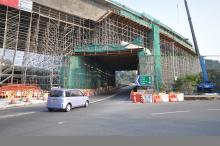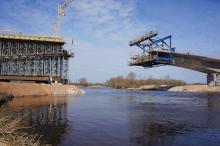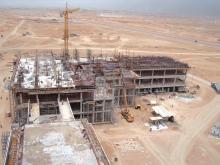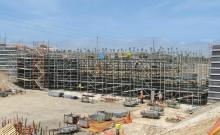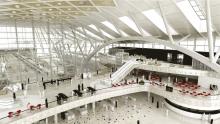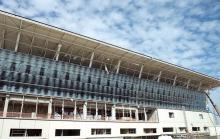Ian Hayes, RMD Kwikform’s divisional operations director, gives an overview of the current global formwork and shoring market
Over the recent past, the formwork and shoring market has been changing as the global economic recovery begins to take shape and different countries again begin to invest in key infrastructure projects. Notably there has been a shift in the Middle East, as countries like Saudi Arabia, Kuwait and Oman embark on major airport and the road infrastructure projects to support developme
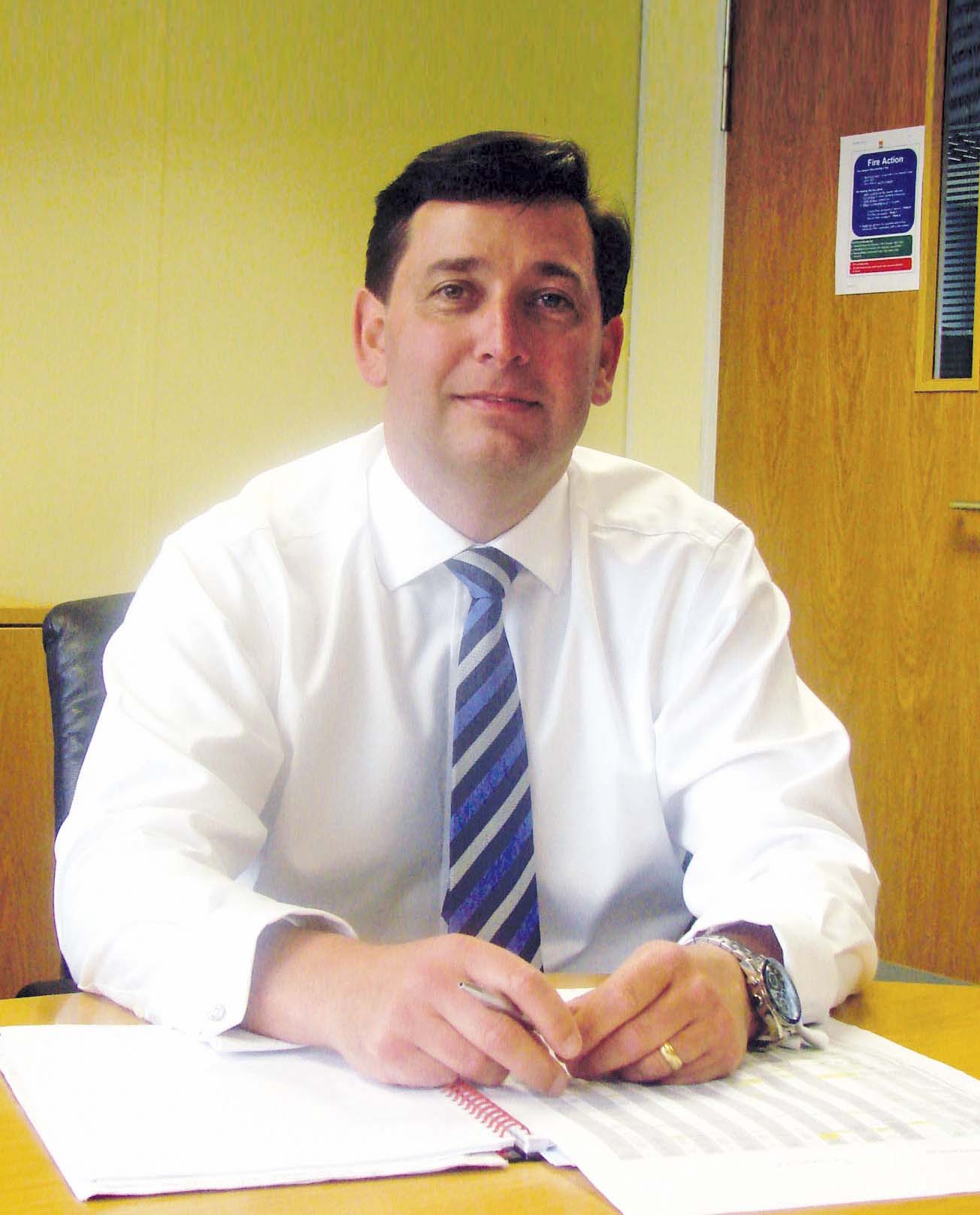
Ian Hayes, RMD Kwikform’s divisional operations director, sees huge potential for manufactured formwork solution growth in emerging markets
Ian Hayes, 319 RMD Kwikform’s divisional operations director, gives an overview of the current global formwork and shoring market
Over the recent past, the formwork and shoring market has been changing as the global economic recovery begins to take shape and different countries again begin to invest in key infrastructure projects. Notably there has been a shift in the Middle East, as countries like Saudi Arabia, Kuwait and Oman embark on major airport and the road infrastructure projects to support development of their economies.
For Qatar, the market has begun to pick up, with1556 World Cup projects including road, water and rail infrastructure moving forward at pace. With Asia continuing to benefit from a better economy, Hong Kong, Indonesia and the Philippines markets have grown significantly.
India too is showing encouraging activity in infrastructure development, with new equipment like Rapidshor and heavy-duty Megashor shoring being introduced into the market. For Hong Kong in particular, what has been a period of stagnation has now over the last few years seen the market spring into life, with major projects underway and continuing to be announced.
Whilst Australia avoided the recession, it is not the buoyant market it once was, but has remained steady.
In Europe the picture has been very different, with spending continuing to be restricted and major projects either delayed or cancelled. Where Southern Europe had significant projects in the past, due mainly to EU funding, the recovery in these markets will take some time.
When it comes to the US market, there is considerable geographic variation arising from the different investment needs and profiles of individual states. This creates an interesting environment in which to work. Whilst there is little Federal budget to support updating the bridge infrastructure, the multi-occupancy housing sector is buoyant, particularly up and down the west coast. It is these types of projects that will drive the use of modern formwork and shoring systems now and into the future.
With the world’s eye on Brazil and this summer’s football World Cup the South and Central American markets have seen significant growth. With our presence in Chile, Panama and partnerships in other territories, we have seen not only growth in the number of projects, but also the scale, a trend which we see continuing into 2014.
We invested heavily in our South African operation in 2013 and this should drive growth in our markets there as we look ahead.
An important development in all of these emerging markets has been the growth in system formwork and shoring. The ambition of larger scale projects has also seen a major drive to 3D design solutions within the engineered formwork and shoring market. The benefits of speed and accuracy in 3D design also contribute to ensuring safer solutions are used on-site.
We are also seeing a trend towards the use of systems such as our Paraslim composite bridge solution, which is now being exported to countries like the US and Middle East. This is further enhanced by a requirement for lightweight solutions like our Alshor Plus aluminium shoring, which we have been introducing to overseas markets.
In 2013 we saw a major shift from a number of customers to specify Aluminium Shoring solutions over heavier steel shoring, using its enhanced performance and a trained workforce to win jobs against more traditional methods.
For highways work, in 2014 we expect to see the continued growth and introduction of labour efficient and high strength Aluminium shoring with more safety focused accessories and modifications to enhance the use of products on-site. These will include guard rails, general access platforms and application specific designs.
For the likes of abutment and wall formwork, the development of composite plastic faces in large panel formwork systems such as Maxima and Minima, will benefit contractors and clients by providing better quality formed surfaces and greater durability in the product.
As customers demand to be able to take a virtual “walk through” their project at the preconstruction phase to better understand how complex areas are to be built, there will be a much greater demand for 3D imagery at the design stage. This in turn will lead to a greater use and exploitation of the benefits system formwork can offer.
With such high levels of competition now in the market, it will be the selection of a supplier who has a stock of readily available equipment, backed by a state-of-the-art design service, that will win. The key to the products themselves is the ability for them to be easily assembled by relatively unskilled labour. This type of solution is the one which provides a quicker turnaround in use that will actually drive down the total cost in use of the formwork on a project, rather than the unit rental cost of the equipment.
Over the recent past, the formwork and shoring market has been changing as the global economic recovery begins to take shape and different countries again begin to invest in key infrastructure projects. Notably there has been a shift in the Middle East, as countries like Saudi Arabia, Kuwait and Oman embark on major airport and the road infrastructure projects to support development of their economies.
For Qatar, the market has begun to pick up, with
India too is showing encouraging activity in infrastructure development, with new equipment like Rapidshor and heavy-duty Megashor shoring being introduced into the market. For Hong Kong in particular, what has been a period of stagnation has now over the last few years seen the market spring into life, with major projects underway and continuing to be announced.
Whilst Australia avoided the recession, it is not the buoyant market it once was, but has remained steady.
In Europe the picture has been very different, with spending continuing to be restricted and major projects either delayed or cancelled. Where Southern Europe had significant projects in the past, due mainly to EU funding, the recovery in these markets will take some time.
When it comes to the US market, there is considerable geographic variation arising from the different investment needs and profiles of individual states. This creates an interesting environment in which to work. Whilst there is little Federal budget to support updating the bridge infrastructure, the multi-occupancy housing sector is buoyant, particularly up and down the west coast. It is these types of projects that will drive the use of modern formwork and shoring systems now and into the future.
With the world’s eye on Brazil and this summer’s football World Cup the South and Central American markets have seen significant growth. With our presence in Chile, Panama and partnerships in other territories, we have seen not only growth in the number of projects, but also the scale, a trend which we see continuing into 2014.
We invested heavily in our South African operation in 2013 and this should drive growth in our markets there as we look ahead.
An important development in all of these emerging markets has been the growth in system formwork and shoring. The ambition of larger scale projects has also seen a major drive to 3D design solutions within the engineered formwork and shoring market. The benefits of speed and accuracy in 3D design also contribute to ensuring safer solutions are used on-site.
We are also seeing a trend towards the use of systems such as our Paraslim composite bridge solution, which is now being exported to countries like the US and Middle East. This is further enhanced by a requirement for lightweight solutions like our Alshor Plus aluminium shoring, which we have been introducing to overseas markets.
In 2013 we saw a major shift from a number of customers to specify Aluminium Shoring solutions over heavier steel shoring, using its enhanced performance and a trained workforce to win jobs against more traditional methods.
For highways work, in 2014 we expect to see the continued growth and introduction of labour efficient and high strength Aluminium shoring with more safety focused accessories and modifications to enhance the use of products on-site. These will include guard rails, general access platforms and application specific designs.
For the likes of abutment and wall formwork, the development of composite plastic faces in large panel formwork systems such as Maxima and Minima, will benefit contractors and clients by providing better quality formed surfaces and greater durability in the product.
As customers demand to be able to take a virtual “walk through” their project at the preconstruction phase to better understand how complex areas are to be built, there will be a much greater demand for 3D imagery at the design stage. This in turn will lead to a greater use and exploitation of the benefits system formwork can offer.
With such high levels of competition now in the market, it will be the selection of a supplier who has a stock of readily available equipment, backed by a state-of-the-art design service, that will win. The key to the products themselves is the ability for them to be easily assembled by relatively unskilled labour. This type of solution is the one which provides a quicker turnaround in use that will actually drive down the total cost in use of the formwork on a project, rather than the unit rental cost of the equipment.

